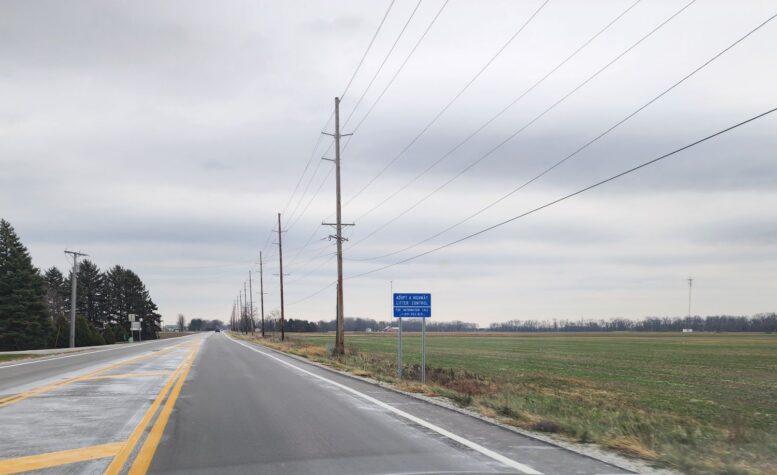By JAN McLAUGHLIN
BG Independent News
Driving from point A to B is second nature for most Wood County residents. But for many, having an operable vehicle is an out of reach luxury.
While most counties in Ohio have countywide transportation systems, proposals for such a program here have never gotten into gear.
“Wood County is a very large county,” said Jim Oliver, who presented updated public transportation data to the Wood County Commissioners on Tuesday morning. At 620 square miles, Wood is one of the largest counties geographically in Ohio.
“It’s a tale of two counties,” divided into the haves and the have-nots, said Oliver, the mobility management coordinator with the Great Lakes Community Action Partnership.
The north half of the county has access to varying types of public transportation, and Bowling Green has a citywide transit service. But south, east and west of Bowling Green, people without their own transportation are hard pressed to find rides to destinations like jobs, doctor appointments and grocery stores.
“There’s a lot of folks who live in these smaller communities, and they can’t drive anymore,” Oliver said. Without some type of public transportation, it’s difficult for some aging seniors to remain in their own homes.
Then there are people who don’t have the means to maintain a vehicle.
“We’re so used to jumping in our cars and driving. But if you live in North Baltimore or West Millgrove, and your car doesn’t start, what do you do?”
Wood County’s splintered transportation systems are just not working for many residents who need the service, Oliver said.
To get a fresh look at transportation needs, GLCAP listened to focus groups and conducted surveys. The information gathered showed the following unmet transportation needs in Wood County:
- Lack of countywide transportation service, particularly in rural areas.
- Limited service hours, geographic coverage and affordability.
- Infrequent service to key destinations, including medical centers, jobs and schools.
- Transportation barriers to employment, healthcare and essential services.
- Insufficient flexible, on-demand transportation options.
- Lack of weekend transportation service.
- Inadequate infrastructure, such as sidewalks and bike lanes.
- Limited access to healthy food and medical appointments, especially in rural areas.
- Barriers to aging in place due to inadequate pedestrian and accessible design in communities.
- Social isolation caused by transportation gaps.
- Challenges in addressing social determinants of health due to lack of reliable transportation.
- Limited public awareness of available transportation options.
- Unclear or complicated scheduling processes.
- Long wait times for transportation services.
The goal is to identify existing transportation resources, assess gaps and unmet mobility needs, and outline strategies to address them.
The Federal Transit Authority requires public transit plans to be developed and approved through a process that includes participation by seniors, people with disabilities, human services providers, members of the public, and representatives of public, private and nonprofit transportation. Ultimately, for the plan to proceed and receive funding, a resolution of support must be approved by the Wood County Commissioners.
On behalf of GLCAP, the lead agency for the coordinated plan, Oliver asked the commissioners to adopt a resolution in June, so the plan can be submitted to the Ohio Department of Transportation by July 1.
“We need to think outside the box to get services throughout Wood County,” he said.
According to Oliver, GLCAP officials would like to see the Bowling Green Transit program be expanded countywide.
“That’s a big discussion,” he said. “We are trying to get as many transportation options throughout Wood County.”

